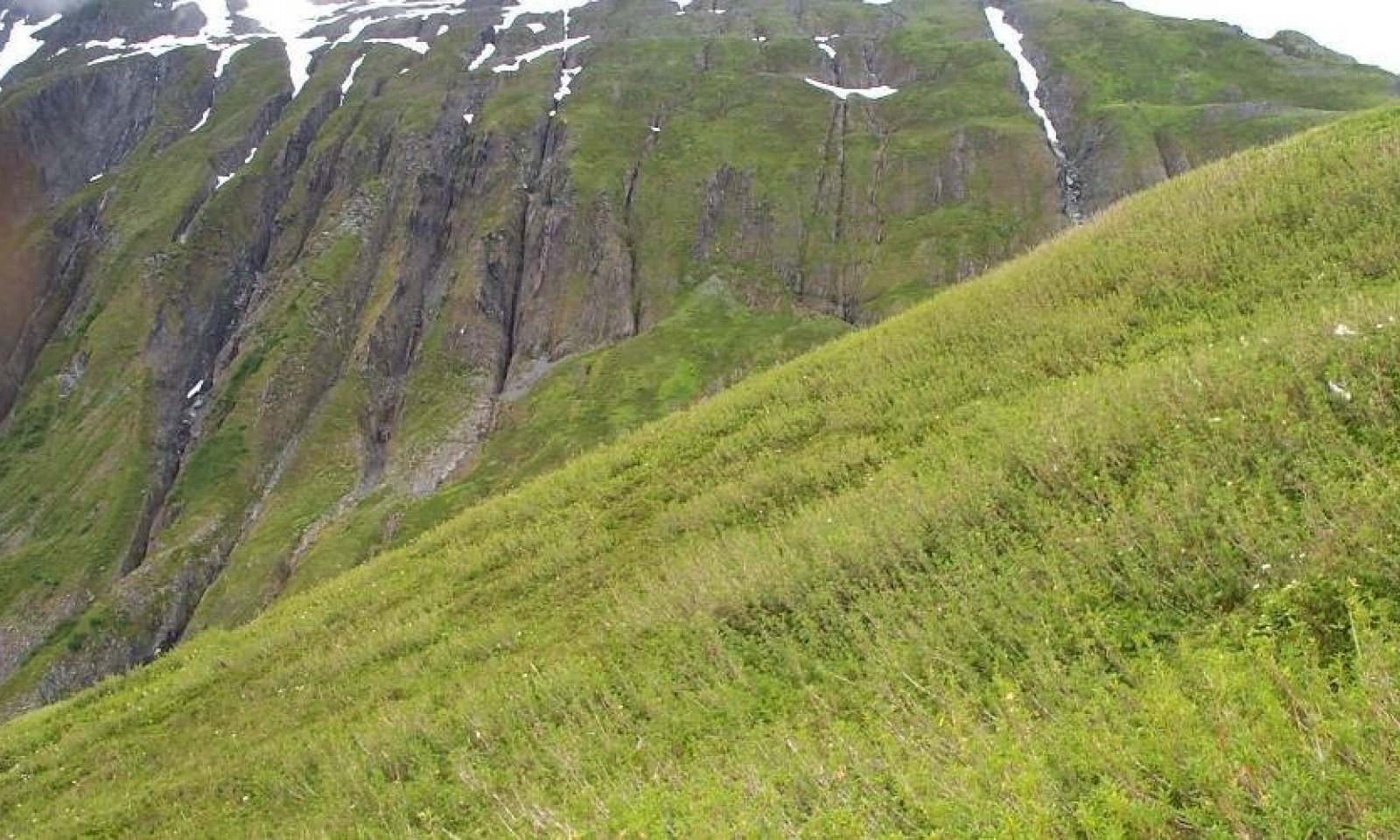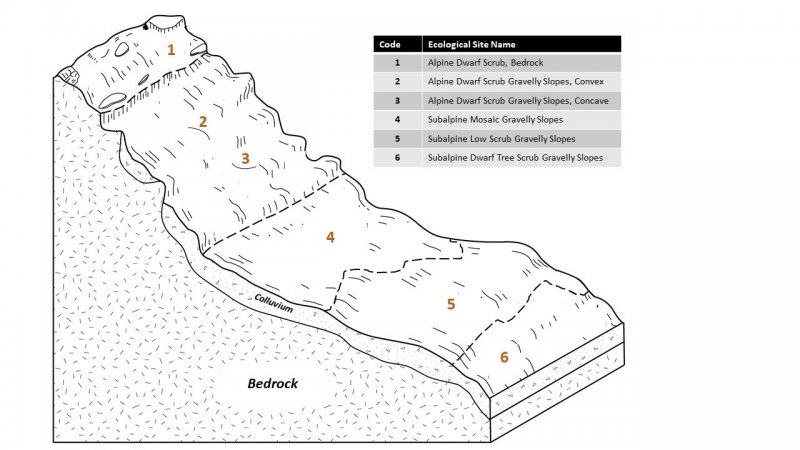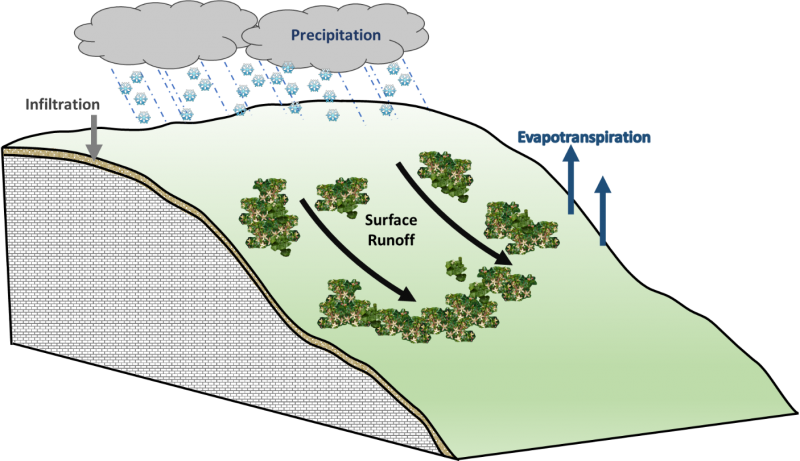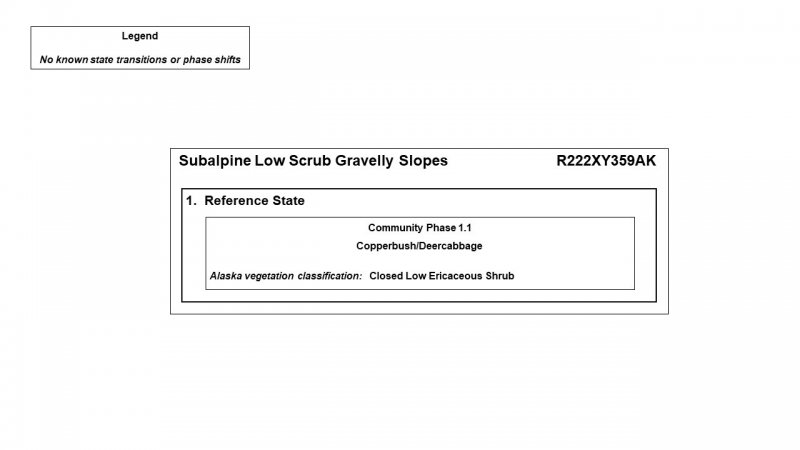

Natural Resources
Conservation Service
Ecological site F220XY205AK
Subalpine Woodlands Gravelly Moist Slopes
Last updated: 6/20/2019
Accessed: 01/10/2025
General information
Provisional. A provisional ecological site description has undergone quality control and quality assurance review. It contains a working state and transition model and enough information to identify the ecological site.
MLRA notes
Major Land Resource Area (MLRA): 220X–Alexander Archipelago-Gulf of Alaska Coast
The Southern Alaska Coastal Mountains (MLRA 222) encompasses the Pacific Border Ranges and Coast Mountains physiographic provinces (Wahrhaftig 1965). Spanning approximately 26,355 square miles, the elevation ranges from sea level at the base of glaciers and ice fields to 18,008 feet at Mt. St. Elias. The MLRA was covered by glacial ice during the Pleistocene epoch, a time period spanning from 2.6 million to 11,700 years ago. During interglacial periods glacial extent was reduced, leaving behind various glacial deposits. Over time these deposits have been eroded or buried by colluvium and slope alluvium, which now covers more than 90 percent of the unglaciated landscape. Paleozoic, Mesozoic, and Lower Tertiary stratified sedimentary rocks, and occasionally Paleozoic intrusive rocks, underlie much of the area and are exposed on steep mountain slopes and ridges (USDA-NRCS 2006).
This landscape lies in the true alpine zone where glacial ice is, and has been, the dominant ground cover. Glacial ice encompassed all the MLRA during the Late Wisconsinan glaciation, 25,000 – 21, 000 years ago (Kauffman et al. 2011). Changes in climatic conditions following this period resulted in the recession of some glaciers and slowly exposed new surfaces for inhabitation by terrestrial ecosystems. Pioneer plant communities began to establish on the new substrate within the first 30 years and consisted mostly of evergreen, herbaceous dwarf shrubs with some pockets of low shrubs. These communities quickly transitioned to tall shrubs within 100 years of deglaciation. By approximately 13,000 years ago, four stable plant communities emerged across the non-glaciated landscape – ericaceous dwarf shrub, low shrub, tall shrub, and herbaceous communities – and form the present-day ecosystems (Boggs et al. 2010).
Classification relationships
USFS Ecoregion Province: Marine Mountains (M240), Forest-Meadow High (M242b) (Bailey 2007)
U.S. EPA Level III Ecoregion: Pacific Coastal Mountains (119) (Gallant et al. 2010)
National Vegetation Classification – Ecological Systems: Alaskan Pacific Maritime Subalpine Copperbush Shrubland (CES204.316) (NatureServe 2015)
Biophysical Settings: Alaskan Pacific Maritime Subalpine Alder-Salmonberry Shrubland (BpS 7816520) (LANDFIRE 2009)
Alaska Natural Heritage Program Landcover Class: Low-Tall Shrub: Alder-Salmonberry (Boggs et al. 2016)
Alaskan Vegetation Classification: Closed Low Ericaceous Shrub (Viereck et al. 1992)
Ecological site concept
Subalpine Low Scrub Gravelly Slopes ecological sites occur on concave snow accumulation areas on moderate to steep subalpine mountain slopes (Viereck et al. 1992; DeVelice et al. 1999; Boggs et al. 2008). The soils are moist and have a thin organic matter layer over silt, sand, gravel, or bedrock (Boggs et al. 2008).
The reference vegetation on this ecological site is defined by low shrubs and herbaceous vegetation. Copperbush (Elliottia pyroliflora (Bong.) S.W. Brim & P.F. Stevens) is the dominant low shrub, and deercabbage (Nephrophyllidium crista-galli (Menzies ex Hook.) Gilg) is a characteristic herbaceous species of the site. Extensive snow accumulation and a short growing season maintain this plant community (Viereck et al. 1992).
Associated sites
| F220XY350AK |
Subalpine Woodlands Gravelly Dry Slopes Located adjacent to R222XY359AK but in a slightly more protected positions |
|---|---|
| R220XY358AK |
Subalpine Scrub Gravelly Dry Slopes Located in a slightly higher landscape position |
Table 1. Dominant plant species
| Tree |
Not specified |
|---|---|
| Shrub |
(1) Elliottia pyroliflora |
| Herbaceous |
(1) Nephrophyllidium crista-galli |
Click on box and path labels to scroll to the respective text.



